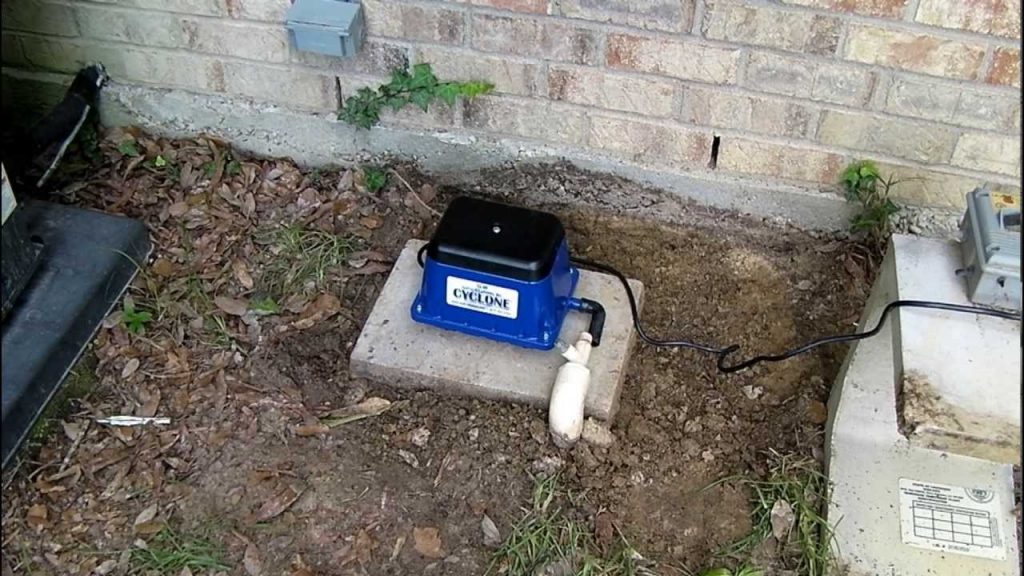
In a septic tank system, an aeration device pumps air to allow “aerobic bacteria” to grow. The bacteria in aerobics need oxygen for survival and they are more voracious than the anaerobic ones, usually present in an unpumped septic tank. The aim here is to purify the fluid in the septic tank by the aerobic bacteria and also to reach into the leach field lines, eliminating the “bio-mat,” which has evolved over the years. This bio-mat blocks the leach field and prevents it from doing its job.
How Septic Tank Aerators Work
One of the key things to consider when the aerator doesn’t work is first to understand how it works. Aerators speed up the process of decomposing solids in your system by adding oxygen, that promotes the growth and digestion of bacteria in your holding tank. A higher concentration of this good, natural bacteria in your septic system means a faster and more thorough wastewater purification system. Since a septic aerobic system produces cleaner effluent, a much smaller system is needed for secondary treatment (if applicable).
When your septic system stops working, your system naturally switches from an aerobic to an anaerobic environment, a far slower environment, much less efficient to break down the solids in your system. When your system works like anaerobic septic, your effluent is much closer to raw sewage than the clear, odourless effluent discharges your anaerobic system. Because aerator septic systems usually do not have any secondary treatment systems, your system can either start to discharge raw waste directly into the environment or into the secondary treatment system. This system will soon become overwhelmed and will experience catastrophic failure if a secondary treatment system exists, so it is critical to be aware that signs are present, or that your aerator fails. The sure indication that your aircraft has failed is that your device discharges into a secondary treatment system or into the atmosphere from an immense unpleasant odour.
Problems with Septic Aeration System
The first sign of something wrong with your septic aerator is usually the sounding of an alarm system . Sadly, your alarm can sound for many reasons, which are all not directly related to the aerator. The septic warning is identical to the “check safety engine,” which lights up your car and also needs the assistance of a professional, just as with your car. While all are not connected to the aeration device, the most common triggers of the septic alarm include:
Power loss: This is one of the easiest solutions to this problem. This is also triggered by a circuit breaker. But if that problem continues, it is a sign of a bigger electrical problem and should be immediately investigated by us.
Sewage pump failure: If the water pump fails, your system will increase water and signal your septic alarm. To restore the functionality of your system, you may have to replace or repair your sewage pump.
Insufficient air pressure: Enough air pressure is required to properly oxidize your airplane. If the air pressure of your system is inadequate, the system aerator must frequently be replaced or repaired.
Broken Timer: the aerobic system’s temporary timer ensures that water is not released until the effluent is clear and clean enough for the next step of the system to be released or moved directly to a secondary treatment device.
Clogged diffuser: If the diffuser is obstructed your system can not discharge the liquid held by the system, as the outlet for your system.
When your septic alarm sounds, silence the alarm and check immediately if the problem is just a trickle breaker. If that’s not the case or the breaker keeps running, you need urgent maintenance for your aerator.